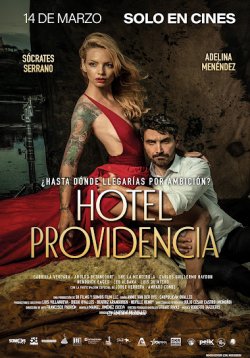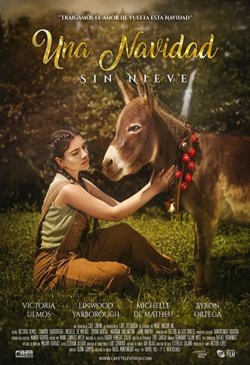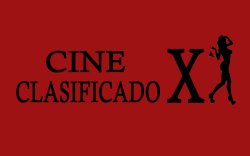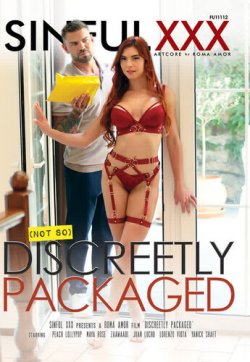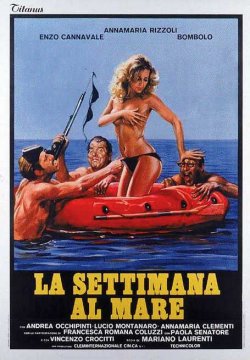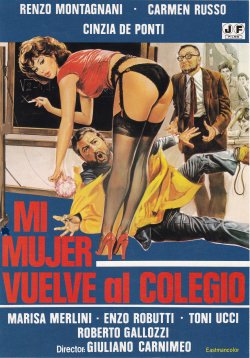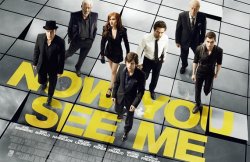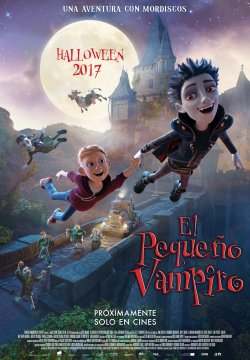 |
|
SINOPSIS
Rudolph tiene trece años y es un vampiro. Su familia está viéndose amenazada por un cazador de vampiros. Mientras Rudolph entabla amistad con Tony, un chico mortal de su misma edad, y el cual está fascinado por los castillos, los cementerios y los vampiros sobre todo. Ambos intentarán unir sus fuerzas para salvar a la familia de Rudolph...
INTÉRPRETES
Animación
MÁS INFORMACIÓN DE INTERÉS
![]() CRITICA
CRITICA
![]() BSO
BSO
![]() CLIPS
CLIPS
![]() CÓMO SE HIZO
CÓMO SE HIZO
![]() VIDEO ENTREVISTAS
VIDEO ENTREVISTAS
![]() AUDIOS
AUDIOS
![]() PREMIERE
PREMIERE
 INFORMACIÓN EXCLUSIVA
INFORMACIÓN EXCLUSIVA
A REUNION WITH THE LITTLE VAMPIRE...
The plot of THE LITTLE VAMPIRE leads us from an initial setting in the Black Forest, Germany, to the dark landscapes of Transylvania. The origin of this story, however, is a café in Amsterdam – with directors Richard Claus and Karsten Kiilerich. Claus and Kiilerich had met through their work on the production of ‘The Ugly Duckling and Me!’ which Karsten had directed. Karsten and Richard, wanting to work together on a new project, were on the lookout for an animated movie. They were sitting together with the Dutch producer Chris Brouwer and discussed the mechanics of creating THE LITTLE VAMPIRE in animation. This was 2012 – over ten years after the first film was released in cinemas with remarkable success. The three film-makers agreed that it was time to write the next chapter of this success story, which had begun with Angela Sommer-Bodenburg’s bestselling children’s books, and aside from the theatrical picture had also spawned two television series.
Producer Chris Brouwer remembers: “We often spoke about a possible continuation, but we were missing the spark that would bring it to fruition.”
Only once the idea came to actualise the film as an animation, did the breakthrough come. “When it became clear that we would be taking on an animated movie – one in 3D nonetheless – we were all very enthusiastic. After that the preparations continued at full speed.”
The author Angela Sommer-Bodenburg was involved in the new project from the start: “Here everything was absolutely correct. I am very happy with this movie, also because it is not just one movie, but rather could become a whole series of movies.”
Her contributions were indispensable for the film-makers – Richard Claus once again emphasizes the uniqueness of the story: “A Vampire as a child – that is Angela Sommer-Bodenburg’s invention. Before the publication of her books, Vampires were always portrayed as adults, but she created an extended Vampire family with parents, children, aunts, uncles, and so on. Thereby she turned the whole Vampire-genre on its head, because in her stories, the Vampires are the protagonists and the Vampire hunter is the villain. Of course, the mortals have prejudices against the Vampires – and vice versa. Therefore, Rudolph and Tony and their parents must give up their preconceived opinions before a true friendship can develop.”
THE DEVELOPMENT OF THE STORY: FAMILIAR CHARACTERS AND THE BEST OF TODAY...
Which story, however, would be best suited to a little Vampire movie in computer animated 3D? Richard Claus recounts: “We made it very clear: we are not going to make a sequel, nor a remake – we are going to make the best that is possible with what is available right now.”
That Karsten Kiilerich came on board as a co-director, was a very important factor for Richard Claus: “Without Karsten and his decades of experience in animation this would not have come about.” Kiilerich was present from the beginning of the development process and to the storyboard, character development, and 3D realization of 2D designs he brought his vision and ideas.
The filmmakers began with the task of conceiving a new story from scratch, Chris Brouwer tells us: “We were aware that when we make an animated film, we can create breath-taking action scenes.” And Richard Claus added laughingly: “In the end we will have had no concerns about reconstructing our ideas in the studio. When I think back to 20 years ago and the hassle we went through with flying children and flying cows – those poor kids hanging from the ceiling to simulate flying…”
Now there were no bounds to their creativity and the filmmakers knowingly set high standards for themselves, as Karsten Kiilerich tells it: “When you decide to make an animation, you have to be very sure that it’s the right project, because you’ll be spending a minimum of two, but probably four years of your life on it. So, before you accept, you have to ask yourself: Is the story good? Are the characters interesting? Does it let you produce unique pictures? Does it take you to places, that we haven’t seen before? And finally, is there an audience for it? For me the answer to all these questions was a resounding, ‘Yes’.”
One strategic decision that was encountered early in the development phase involved the two main characters, both of which would be portrayed a couple years older than in written original. Richard Claus: “If they are too young, it is less believable when perform certain actions – so it seemed reasonable to turn them into 13-year-olds.”
The world that the film presents should however – with all the Vampire-action – remain accessible and comprehensible. Karsten Kiilerich explains: “It may sound strange for a Vampire movie, but it was important for us, to keep the story realistic. Especially when one tells such a fantastical story, it is necessary that the characters are understandable and consistent. The same is true for the production design: We searched for a striking, and distinctive style, that didn’t distance itself too far from the real world.” Hence, the laws of physics (for the most part) also apply to the new cinema adventure of the Little Vampire…
FAMILY BONDS: TONY, RUDOLPH AND THE WHOLE CHARACTER UNIVERSE...
In the 21 volumes of THE LITTLE VAMPIRE children’s book series, Angela Sommer-Bodenburg practically created an entire universe, inhabited by distinctive protagonists and countless side characters. In the character development phase, the film makers had the possibility of building up characters completely from scratch – and yet they quickly decided to stay as close to the original material as possible. Richard Claus: “When it comes to the Sackville-Bagges and the Thompsons, there, we did stay very close to Angela Sommer-Bodenburg’s character descriptions. In the film, we show a very very loving family – and that is taken directly from the books.” Also, the dynamic between the two main characters Tony and Rudolph and their characteristic differences that are portrayed in the film, are the same as they are described by Angela Sommer-Bodenburg.
Similarly, Rudolph’s siblings – his older brother Gregory and his younger sister Anna – play central roles in the plot. Sommer-Bodenburg, “For me Anna is also terribly important, because I have incorporated aspects of myself in her.”
But what would an animated film be without a villain? Rookery, who first appears in the books as a cemetery caretaker, has blossomed into a professional Vampire Hunter in this film – and he has also gained a helper at his side, the genius (or maybe crazy?) inventor Maney. Richard Claus says: “A film needs an entertaining villain – and when this villain doesn’t have someone to talk to he is only a tenth as interesting.”
The status of secret stars of the film must be shared with the Black Forest innkeeper-couple Emma and Otto, who provide the Thompsons with their family retreat. As Claus tells it: “The couple from the Black Forest have quietly developed into our favourite characters. They create many funny moments, that children and adults will enjoy.”
For the script, the legendary storyteller Larry Wilson joined the crew. From his hand came the plot of Tim Burton’s BEETLEJUICE as well as the script for THE ADDAM’S FAMILY. Larry was also already involved in the pre-production of THE LITTLE VAMPIRE from the year 2000. “Larry is fantastic at narrative abbreviations”, says Richard Claus enthusiastically. “For the moment where Rudolph and Tony meet, Larry packed the entire history into the confrontation between the two boys, by means of Rookery capturing the Vampire-clan. This way without any boring exposition it is made clear, which dangers threaten Rudolph and his family, and from where Rudolph’s aversion to mortal’s stems from. This is the great art of writing.”
Likewise, in the various scenes with Rookery, Richard Claus’ verdict stays true: “It was really great having someone like Larry working with us.” Because it is always a balancing act with villains in animation films: He has to pose a believable threat, but can’t be too scary for the younger children in the audience. Richard Claus says: “We tried to resolve every action with humour. When Rookery soils his pants or when it turns out he can’t swim, then it becomes very clear, that even villains have their weaknesses. The children should be, so to speak, on the edge of their seats, but the resolution of the built-up tension should be laughter.”
TECHNICAL FINESSE, ALWAYS IN SERVICE TO THE STORY...
Preparation is everything for animations, as Karsten Kiilerich reaffirms – and this a long time before the actual production begins: “In animation you can’t shoot a scene multiple times and then decide, which was the best take, or piece it together from several pieces. In animation, even the smallest detail has to be thought out and planned ahead. For this reason, the directors need to have a very clear vision, even from the very beginning.”
Richard Claus says: “Actually, it’s always about the story – for the technical concerns, you can always find someone, who has the required experience.” And not necessarily in the same area. Ultimately the production of THE LITTLE VAMPIRE was spread out over all of central Europe.
First, Claus began the development together with Chris Brouwer’s Dutch company, First Look, in 2014. This involved the story development, the character design, and the essential production design in its entirety. Kiilerich’s company, A.Film, in Copenhagen then followed by developing storyboards, and turning the characters, sets and props into 3D, all as part of the pre-production. The so-called layout, the complete animation and one part of the post-production on the other hand took place in Holland, before Ambient Entertainment in Hannover took over the lighting, texturing and rendering before Hubert Bartholomaes’ Solid Sound in Munich added sound to the film. “We coped well with this horizontal division of work,” Claus says in summary of the production process.
To achieve the ambitious goal, that the film makers had set in their sights, they did in fact require professionals. “We have many night scenes,” Claus tells us an example, “the film, however, shouldn’t appear too dark.” Each department made the most of their allocated budget, as Richard Claus says proudly: “We put a great deal of effort into the textures, with the clothing of the characters for example, where you can see exactly, whether it is knitted or woven.”
As much as the film makers were pushing for crazy action and rapid, dramatic moments, it stayed clear to them, that these should overpower the plot. Claus, “Theoretically you can place the camera anywhere and do the most outrageous things with it. But one has to resist the temptation of becoming too chaotic. The camera work has a certain purpose after all, and that is to support the story and to highlight the emotions of the characters.”
THE LITTLE VAMPIRE – AN ABSOLUTELY CONTEPORARY STORY...
Not only the images, but also the score is a very essential component for the emotional effect of cinematography. The Dutch composer, Vidjay Beerepoot, chosen for the quality of his ideas, had worked previously with Hans Zimmer, among others. “We were absolutely taken by how he handles the themes and makes variations on them.”
Beerepoot took on the task of writing the score of THE LITTLE VAMPIRE with great enthusiasm: “The man worked day and night for three months straight on the score… and with ‘By Your Side’, he delivered a very nice song for the final credits.” For Richard Claus and the leadership team it was important that enough room is given to the score. “You always start with the image and always have to bear in mind that in the end sound effects and music will still be added and these will emphasise everything.
As international as the language of music is, the film makers also made sure that audiences from different countries feel equally at home in THE LITTLE VAMPIRE. As Chris Brouwer explains: “In the Dutch version Tony and his family are a Dutch family, going on holiday in Germany. In the German version it’s a family from northern Germany, that drives to the black forest, and in the Danish version it’s a Danish family.”
One thing, that crosses these country border and unifies people in their mutual understanding is the theme of friendship – which in THE LITTLE VAMPIRE is the heart of the story, as Richard Claus says, “The big theme of the film is friendship – and a very unusual one at that, because here a young “mortal” and a young Vampire overcome their prejudices and ultimately become friends.”
Aside from all the fun, there is also the quite serious core of the story concerning Tony and Rudolph, they scare each other to begin with, but later realize, that as supposed strangers they nevertheless have many similarities. Richard Claus, “The film is entertainment, but at the same time it tells a story of different cultures and prejudices against strangers (‘the others’).” The author Angela Sommer-Bodenburg agrees with this interpretation stating, “Next to the initial fear, the tolerance and the respect for each other, their different natures also form a large part of their friendship. They will never be the same. Yet despite this there is so much that connects them, because friendship does exactly that, it connects. And a friendship between the different is after all much more exciting than a friendship between complete equals.”
A film, that tells of a great friendship, which merges humour, tension and fantasy, that has a truly timeless look and on top of it all carries a positive message – there is surely a lot to the cinematic adventure of THE LITTLE VAMPIRE. One can’t really wish for more, and so Angela Sommer-Bodenburg speaks for all those involved, when she says, “The film has got what it takes to become a classic!”
 GALERÍA DE FOTOS
GALERÍA DE FOTOS
https://www.cineymax.es/estrenos/fichas/119-t/105845-the-little-vampire-2017#sigProId3340afcbef





